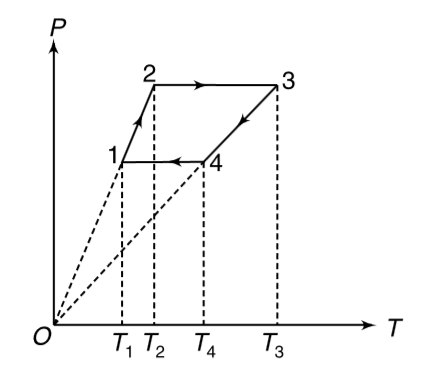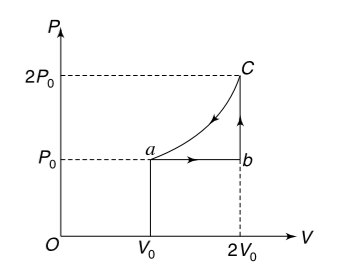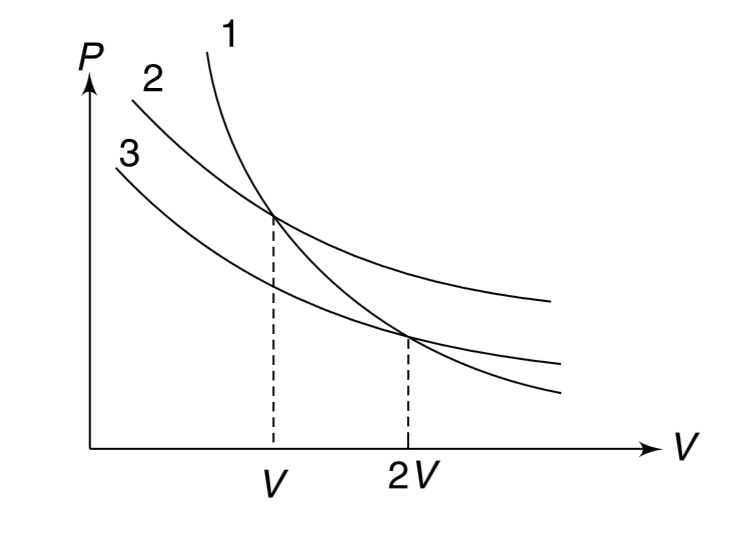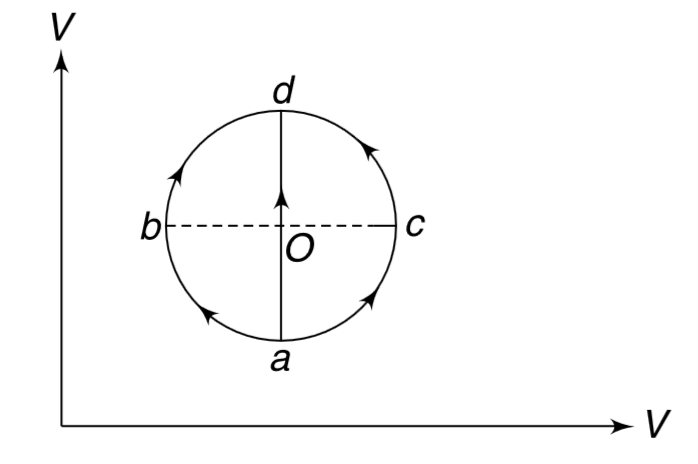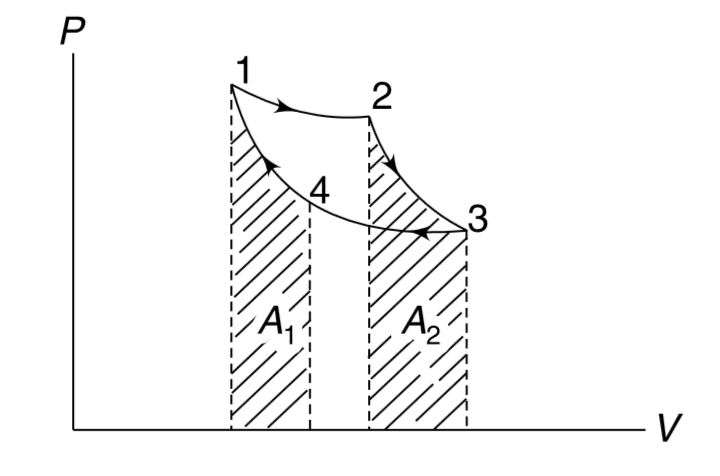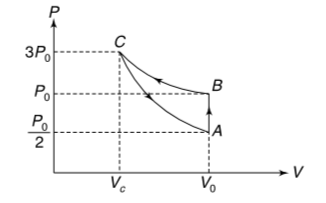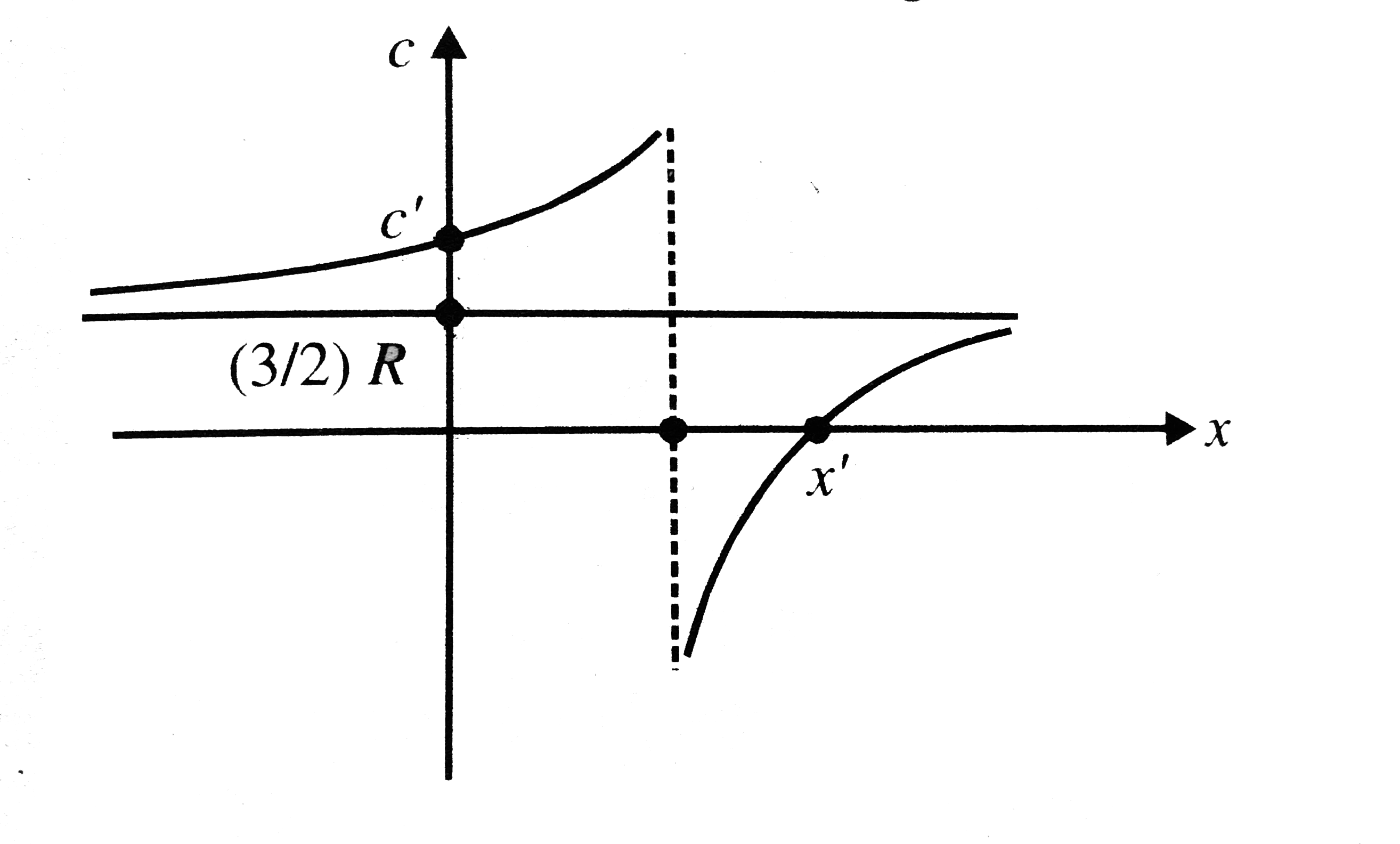Level 1 from ARIHANT PHYSICS Chapter 4 FIRST LAW OF THERMODYNAMICS for Class 11
| Class 11 | PHYSICS |
| Chapter | FIRST LAW OF THERMODYNAMICS |
| ARIHANT PHYSICS | Level 1 |
| Medium | English |
| Academic Year | 2023-2024 |
Question 2
Which of the words-out of reversible, irreversible, adiabatic, isothermal, isochoric and isobaric-will you choose to describe the following processes–
(i) A bullet stops in a target [system is bullet plus target].
(ii) A gas, enclosed in a metallic cylinder provided with a piston, is slowly expanded [System is gas]. There is friction between piston and cylinder.
(iii) A piece of hot stone (which has coefficient of thermal expansion equal to zero) is dipped into cold water [System is stone]. View SolutionQuestion 3
Calculate the amount of heat required in calorie to change 1 g of ice at −10∘C to steam at 120∘C. The entire process is carried out at atmospheric pressure. Specific heat of ice and water are 0.5calg−1.∘C−1 and 1.0calg−1.∘C−1 respectively. Latent heat of fusion of ice and vaporization of water are 80calg−1 and 540calg−1 respectively. Assume steam to be an ideal gas with its molecules having 6 degrees of freedom. Gas constant R=2calmol−1K−1. View SolutionQuestion 8
(i) A horizontal cylinder is fitted with a smooth movable piston. The cylinder contains an ideal gas. The gas is heated slowly so that the piston gradually moves out. After moving out for some distance the piston encounters an ideal spring and compresses it while moving out. Draw P – V diagram for the entire process.
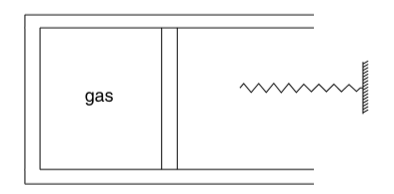
(ii) One mole of an ideal gas is expanded isothermally at temperature T0 to double its volume from V0 to 2V0. Draw a graph showing the variation of volume (V) of the gas versus the amount of heat (Q) added to it. View SolutionQuestion 9
A spherical balloon contains air at pressure P1 and is placed in vacuum. It has an initial diameter of D1. The balloon is heated until its diameter becomes D2=2D1. It is known that pressure in the balloon is proportional to its diameter. Calculate the work done by the gas in expansion.View SolutionQuestion 10
(i) An adiabatic cylinder contains an ideal gas. It is fitted with a freely movable insulating piston. In one experiment the piston is pulled out very fast to double the volume of the gas. In another experiment starting from same initial state, the piston is pulled out very slowly to double the volume of the gas. At the end of which experiment the final pressure of the gas will be higher?
(ii) An ideal gas is contained in a cylinder fitted with a movable piston. In an experiment ‘A’ the gas is allowed to perform a work W(>0) on the surrounding during an isobaric process and thereafter the pressure of the gas is reduced isochorically to half the initial value. At the end of the experiment the temperature of the gas is TA. In a different experiment ‘B’ the pressure of the gas is reduced to half in an isochoric process and then the gas performs a work W on the surrounding during an isobaric process. At the end of the experiment the gas temperature is TB. Which is higher, TA or TB?View SolutionQuestion 12
Two thermally insulated vessels are filled with an ideal gas. The pressure, volume and temperature in the two vessels are P1,V1,T1 and P2,V2,T2 respectively. Now, the two vessels are connected using a short insulating tube.
(a) Find final temperature of the gas.
(b) Express the final pressure of the gas in terms of P1,V1,P2 and V2 only.View SolutionQuestion 13
Two tanks are connected by a valve. One tank contains 2 kg of an ideal gas at 77∘C and 0.7 atm pressure. The other tank has 8kg of same gas at 27∘C and 1.2 atm pressure. The valve is opened and the gases are allowed to mix. The final equilibrium temperature was found to be 42∘C.
(a) Find the equilibrium pressure in both tanks.
(b) How much heat was transferred from surrounding to the tanks during the mixing process. Given: Cv for the gas is 0.745KJkg−1K−1. View SolutionQuestion 15
A sample of an ideal gas has diatomic molecules at a temperature at which effective degree of freedom is 5. Under the action of a suitable radiation the molecules split into two atoms. The ratio of the number of dissociated molecules to the total number of molecules is a. Plot the ratio of molar specific heats γ(=CpCv) as a function of α.View SolutionQuestion 16
An ideal gas undergoes a series of processes represented bya→B→C→D on the P-V diagram. Answer the following questions.
(a) Is the internal energy of the gas at B and D equal?
(b) Find work done by the gas in the process A rarr B rarr C rarr D.
(c) Is it right to say that point B and D lie on an isotherm?
(d) Find the ratio of internal energy of the gas in state A to that in state D.
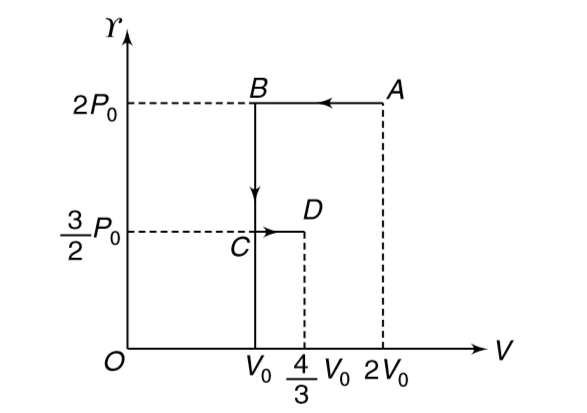 View Solution
View SolutionQuestion 17
30 people gather in a 10m×5m×3m room for a confidential meeting. The room is completely sealed off and insulated. Calculate the rise in temperature of the room in half an hour. Assume that average energy thrown off by the body of a person is 2500 kcal/day, density of air is 1.2kgm3 and specific heat specify capacity of air at constant volume is 0.24kcalkg−1.∘C−1. Neglect volume occupied by human bodies. View SolutionQuestion 19
An ideal mono atomic gas A is supplied heat so as to expand without changing its temperature. In another process, starting with the same state, it is supplied heat at constant pressure. In both the cases a graph of work done by the gas (W) is plotted versus heat added (Q) to the gas. The ratio of slope of the graphs obtained in first and second process is η1. The same ratio obtained for an ideal diatomic gas in η2. Find the ratio η1η2.View SolutionQuestion 22
A gas undergoes a cyclic process a-b-c-a which is as shown in the PV diagram. The process a-b is isothermal, b-c is adiabatic and c-a is a straight line on P-V diagram. Work done in process ab and bc is 5 J and 4 J respectively. Calculate the efficiency of the cycle, if the area enclosed by the diagram abca in the figure is 3 J.
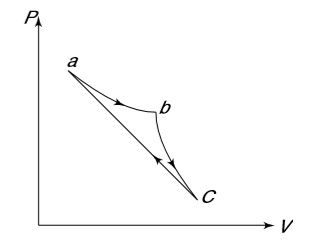 View Solution
View SolutionQuestion 24
A mass less piston divides a thermally insulated cylinder into two parts having volumes V = 2.5 litre and 3 V = 7.5 litre. 0.1 mole of an ideal gas is confined into the part with volume V at a pressure of P=105N/m2. The other part of the cylinder is empty. The piston is now released and the gas expands to occupy the entire volume of the cylinder. Now the piston is pressed back to its initial position. Find final temperature of the gas.
[Take R=253Jmol−1K−1 and γ=1.5 for the gas]View SolutionQuestion 27
Air is contained in a vertical piston – cylinder assembly fitted with an electric heater. The piston has a mass of 50 kg and cross sectional area of 0.1m2. Mass of the air inside the cylinder is 0.3 kg. The heater is switched on and the volume of the air slowly increases by 0.045m3. It was found that the internal energy of the air increased by 32.2kJ/kg and that of the piston increased by 0.06 kJ/kg. Assume that the container walls and outer surface of the piston are well insulated and there is no friction. The atmospheric pressure is 100 kPa. Determine the heat transferred by the heater to the system consisting of air and the piston.
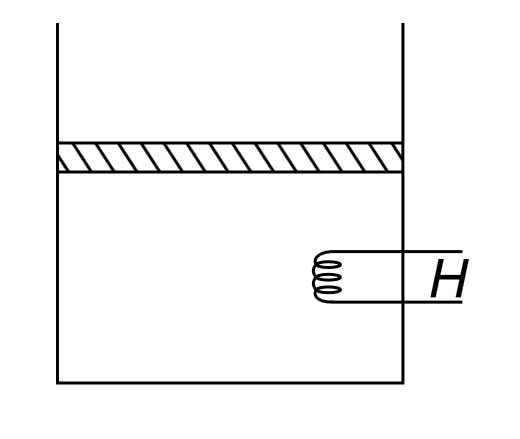 View Solution
View SolutionQuestion 28
One mole of an ideal mono atomic gas is at a temperature T0=1000K and its pressure is P0. The gas is adiabatically cooled so that its pressure becomes 23P0. Thereafter, the gas is cooled at constant volume to reduce its pressure to P03 . Calculate the total heat absorbed by the gas during the process.
Take R=253Jmol−1K−1 and (23)2/5=0.85 View Solution
